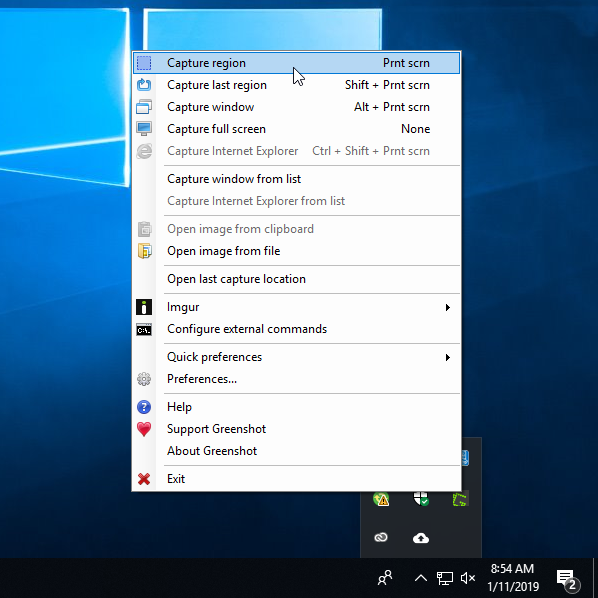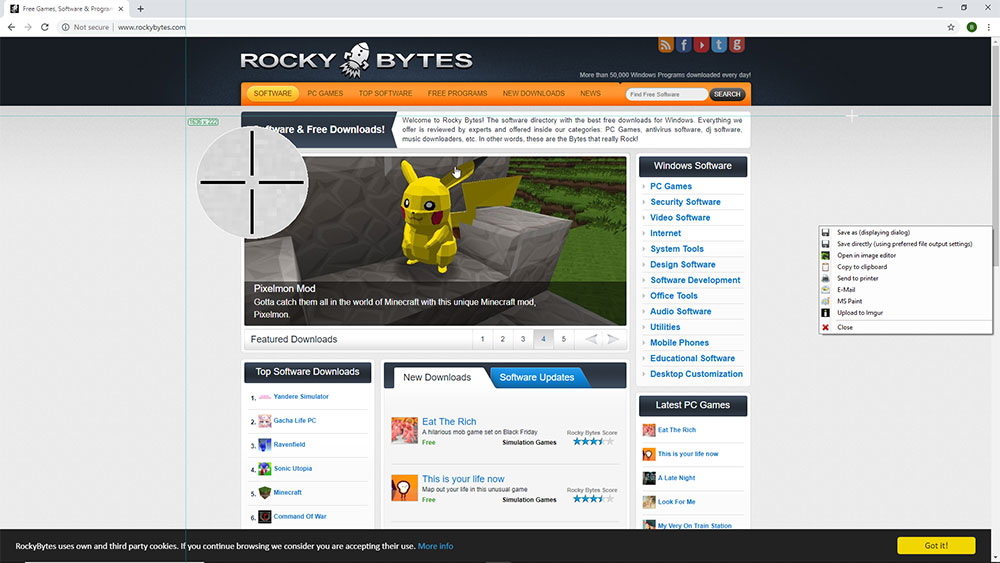

- #GREENSHOT MSI INSTALLER INSTALL#
- #GREENSHOT MSI INSTALLER SOFTWARE#
- #GREENSHOT MSI INSTALLER SERIES#
Interactive Install: If you want to install with some user interaction you can locate the property controlling the accept status of the license agreement and set that to the appropriate value - usually 1 - to indicate accepted license.ĭTF: Now the code answer. Setup.exe: You can also make a WiX Burn bundle (see link for code mockup) or use some sort of other tool to make a setup.exe that will install your original application and then other components in sequence - so there is nothing to trigger to install from the application. This command must be run from an elevated command prompt (admin rights): msiexec.exe /I "Installer.msi" /QN /L* "C:\msilog.log" ALLUSERS=1 MSI logging information (short version: open log and search for "value 3" to find errors). Some digressions and suggestions first: MSI can be installed via msiexec.exe commands, Powershell, DTF C# (see below), WMI, MSI API ( COM, Win32).īatch: With that said, why don't you just install using a regular batch file? The /QN switch will bypass the entire setup GUI-sequence and then there should be no need to accept any license agreements. I would assume you would also need to run elevated - with admin rights - to kick off your installs (per-machine installations). It can work, but it may trigger serious problems with anti-virus and malware scanners.
#GREENSHOT MSI INSTALLER SOFTWARE#
If($: I would avoid triggering software installation from within an application binary - unless you are making an actual setup launcher application. Write-Warning "AD group: $ADGroupName already exists." $ADGroup = New-ADGroup -Name $ADGroupName -GroupScope DomainLocal -Path $CM_OU Write-Host "Create application version folder."

$Path = (Join-Path $Path $AppConfig.Version) $Path = (Join-Path $Path $AppConfig.Name) New-Item -Path $Path -ItemType Directory | Out-Null Write-Host "Create company application folder." $Path = (Join-Path $PackageSource $AppConfig.Company) Write-Warning "Application category is already set." $App | Set-CMApplication -AppCategory $Category.LocalizedCategoryInstanceName $CategoryIsSet = $App.LocalizedCategoryInstanceNames -eq $Category.LocalizedCategoryInstanceName Write-Warning "Category: $($AppConfig.Category) already exists." $Category = New-CMCategory -CategoryType AppCategories -Name $AppConfig.Category Write-Host "Create the application category: $($AppConfig.Category). Uninstall = 'ConsoleSetup.exe /q TargetDir="C:\Program Files (x86)\Microsoft Configuration Manager\AdminConsole" /uninstall'ĭetectionScript = (Test-Path "C:\Program Files (x86)\Microsoft Configuration Manager\AdminConsole\bin\") Install = 'ConsoleSetup.exe /q TargetDir="C:\Program Files (x86)\Microsoft Configuration Manager\AdminConsole" EnableSQM=1 DefaultSiteServerName=' LogonRequirementType = "WhereOrNotUserLoggedOn"ĭescription = "System Center Configuration Manager Console." InstallationBehaviorType = "InstallForSystem" Let’s have a look:ĭescription = "7-Zip ist ein freies Datenkompressionsprogramm mit einer hohen Kompressionsrate." In there all information are stored required to create an application.
#GREENSHOT MSI INSTALLER SERIES#
“Manage the life cycle of your SCCM applications with PowerShell” is a short post series where I share my PowerShell experience with System Center Configuration Manager. Janik Vonrotz - Manage the life cycle of your SCCM applications with PowerShell - Part 2 Create Applications Janik Vonrotz Home /Ĩ min read Manage the life cycle of your SCCM applications with PowerShell - Part 2 Create Applications August 29, 2017


 0 kommentar(er)
0 kommentar(er)
